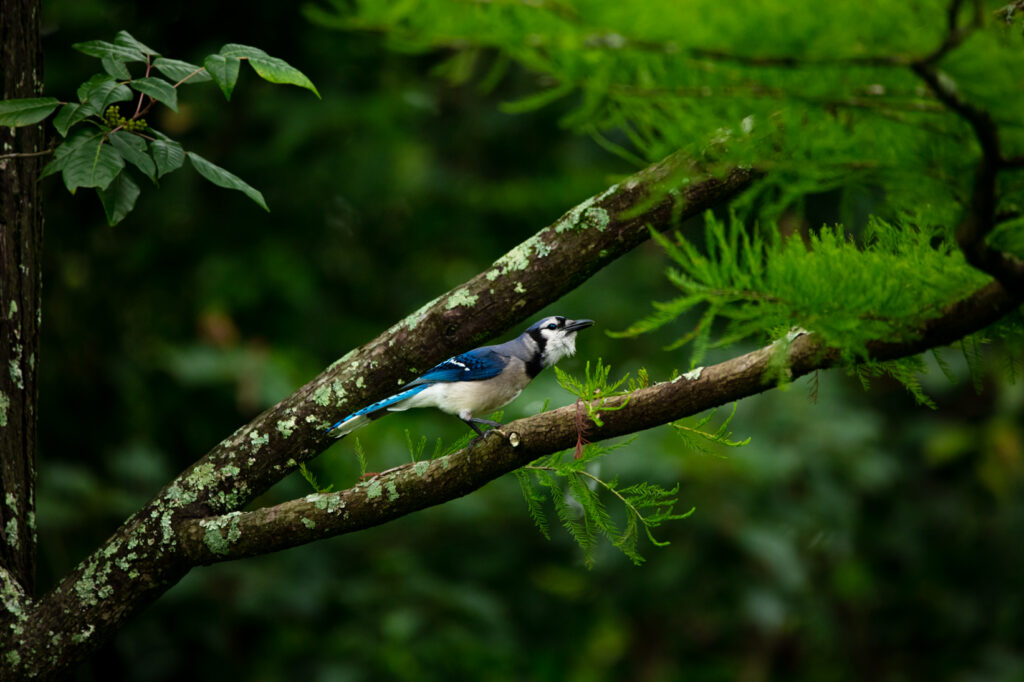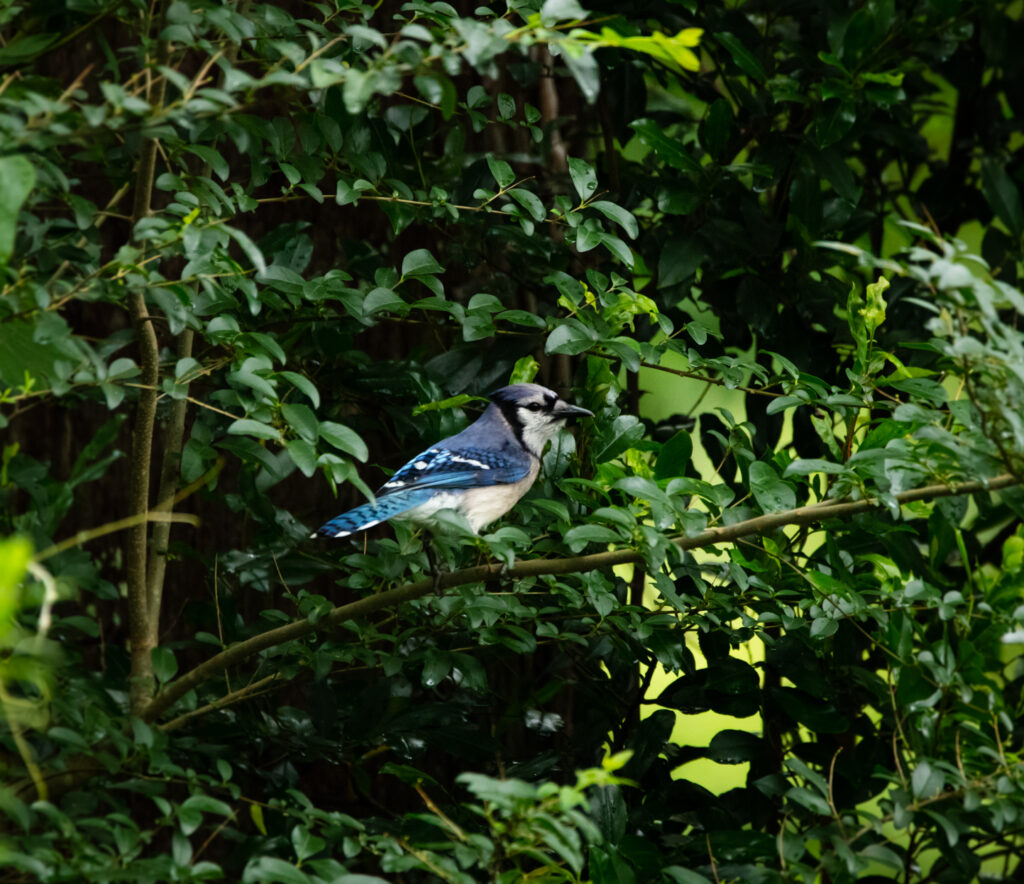While birding at Greenfield Park in Wilmington N.C. a few months ago, I heard the call of a hawk coming from a cypress tree nearby.
Raising my lens, I quickly scanned the tree line to find the source of the screeching and was rewarded with the sight of a colorful Blue Jay mimicking the sound of the “hawk” I’d been hearing.
I laughed to myself and took a few shots of this clever prankster while marveling at it’s beautiful blue plumage now captured in my camera.

This isn’t the first time I’ve been duped into chasing an unseen hawk only to discover a Blue Jay in the woods. These highly intelligent creatures are masters at mimicking the sounds of the world around them.
With a vocal range extending from quiet purrs to ear splitting whistles, Blue Jay calls defy easy descriptions.


Blue Jay 



As demonstrated by this handsome bird, Blue Jays are well known for making screeches that are dead ringers for those of Red-shouldered and Red-tailed Hawks, and for giving calls similar to those of other raptors.
Ornithologists have hypothesized that these crafty birds issue the calls to alert other Jays in the area to the presence of a hawk, to indicate where a hawk was previously, or to trick other species of bird into believing a hawk is nearby to gain exclusive access to a food source.
What ever the case may have been with this gorgeous Blue Jay, I’m glad that I was there to catch him in his act of audible mischief.
Photos by @sally_siko of @birdwatching_nc on the amazing full frame @canonusa
#5Ds


